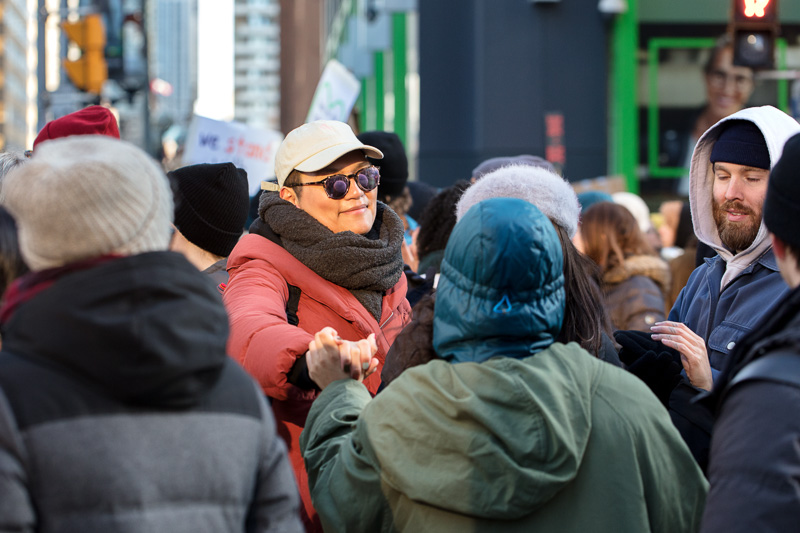A Monday holiday. Family Day. Brunch with family at the Pour House Pub and Kitchen on Dupont Street. I took some gear with me so that, after lunch, I could abandon my family for a photo walk. Despite the vaguest of intentions, my afternoon walk proved an embarrassment of riches, maybe not in terms of photographs, but certainly in terms of photographic opportunities.
It started with my only firm intention—to photograph a “ghost building” on Dupont slated for demotion. Its windows and doors have been boarded up and the whole thing has been painted white. From there, I went up Bathurst to the TTC Hillcrest Complex, wandering through the empty parking lots beneath the high-tension hydro pylons. The sky was blue with fluffy clouds, but the scene felt austere. One could imagine it as the site of a post-apocalyptic event, goose-stepping armies falling into formation or zombies pouring from the warehouses, or—more-likely—a scene of decaying infrastructure: cracked pavement, rusted and toppled hydro pylons, broken windows, and (of course) the ubiquitous graffiti.
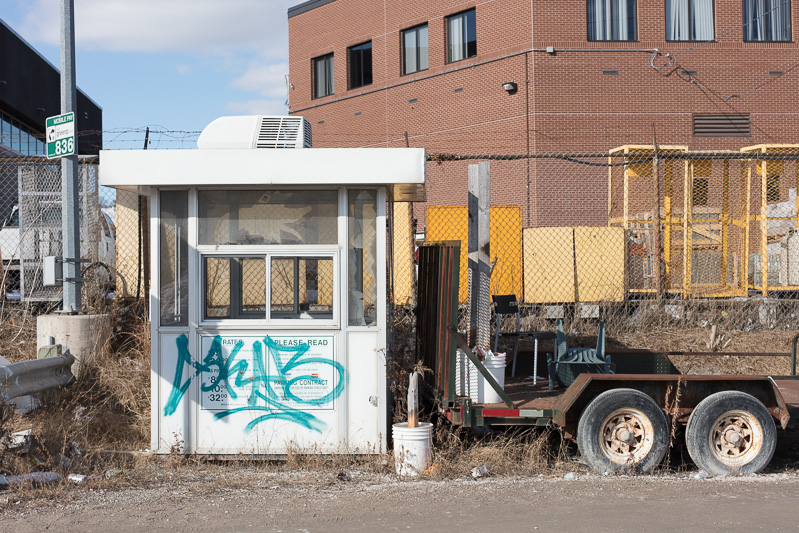
Walking further along Dupont, I decided to explore the laneways of Seaton Village, starting with the dubiously named Cream Top Lane. Although named for the historical fact that the neighbourhood was once home to a number of dairy operations, my 21st century sensibilities imagine Cream Top Lane as the site of more salacious transactions. There’s a lot of good graffiti on the back of the Leal Rental Centre which fronts on Dupont west of Bathurst. As with the ghost building, I wish I had brought a wider lens. All I had was my 50mm Sigma Art Lens and 100mm Canon macro along with my Yashica with fixed 45mm lens. I’ll have to come back.
Wandering through the neighbourhood, I stumbled upon Perly Family Lane which runs north/south between the garages of the houses that front on Manning and Clinton. As I started down the lane, a roar rose up from somewhere south of me. I wonder… I bet there’s a protest, a march in solidarity with the Wet’suwet’en First Nation in northern B.C. which is subject to an injunction at the hands of Coastal Gasoline, the company slated to build a $6.6 bn natural gas pipeline. It sounded like they were assembling in Christie Pits, probably marching east along Bloor Street. If I hurried, I could catch up and get some good protest photos.
But the gods of street photography are capricious gods that are certain to thwart your best intentions, denying you altogether or, more likely, tempting you with other blessings. If you’re a street photography atheist, I can frame this thought in other terms. Jazz, for instance. The drift of street photography is aleatory. You riff off random encounters. They seed your efforts and give you energy, but you must surrender to their whim.
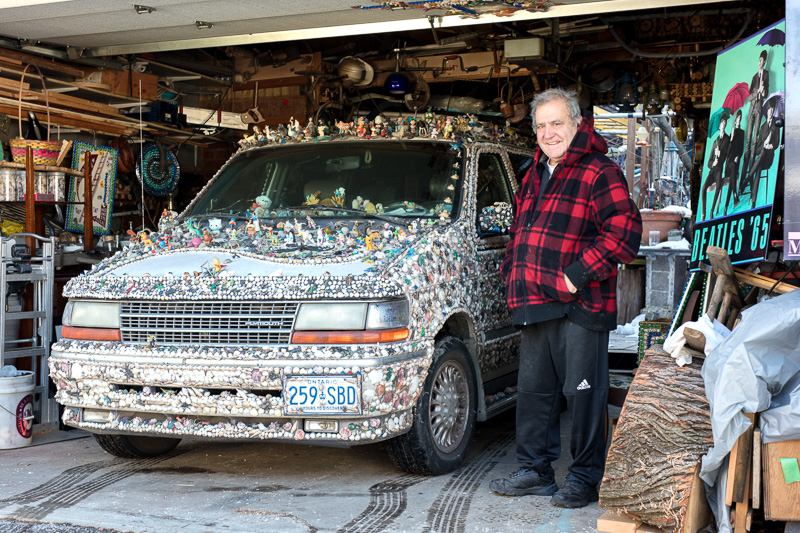
I had passed from the Perly Family Lane into James Kendle Lane, which is its continuation south of Follis Ave., when a van turned up the lane towards me. It was an odd-looking van covered in weird stuff. It turned sideways and backed into an open garage, giving me a clearer view of sea shells and plastic spiders. I’d read about this van or, more specifically, about its owner, Albino Carreira, who had been featured last year in a Toronto Star article. Years ago, he suffered an industrial accident. He fell eight metres from scaffolding, cracking his skull and fracturing his neck and several vertebrae, and ended up on a permanent disability pension. To take his mind off the pain and insomnia, he started decorating things, his mailbox and front porch to begin with, then expanding out into the yard to create a garden of glass beads, plastic bugs, pennies, action figures, rubber boots, bicycle tires, teapots, pool cues, ad infinitem.
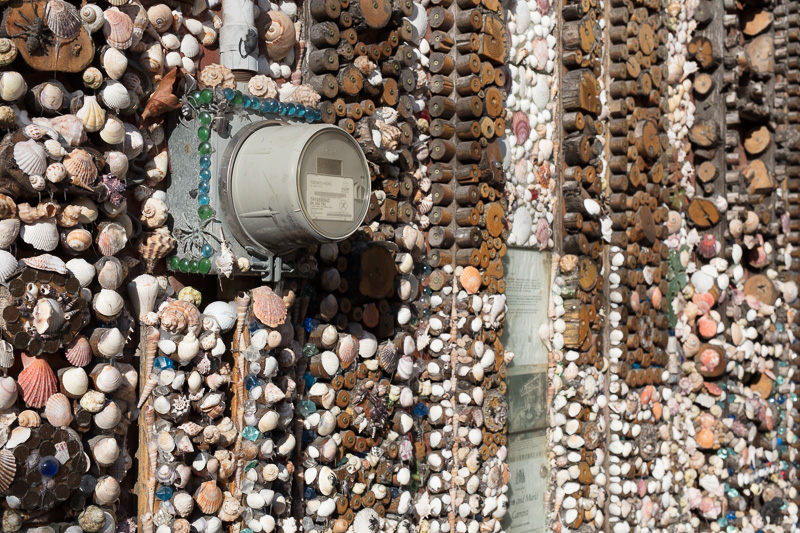
When he got out of his van, I approached and said hello. He showed me some of his latest efforts. There’s a mirror with a white wicker frame now encrusted in glass beads and shiny doo-dads. Interestingly, he has left the mirror side free and decorated the back so that when he mounts it, the mirror will face the wall. There’s the six-inch-wide boards from a door frame, now repurposed with glass and sea shells, to border a stretch below the roof on the south side of his garage. He told me he can’t stop or his fingers seize up. He invited me to visit the front of his house where I poked around in his garden for a time. Truly, this is a shrine to kitsch. If kitsch is a religion, all its devotees should feel compelled to make their Hajj here.

All was quiet walking down Clinton, and I assumed the protest march was done. Walking east along Bloor, people passed me in the other direction carrying signs supporting the Wet’suwet’en. They looked like they were leaving the march, maybe going out for drinks or going home to family. Protest entertainment for a holiday afternoon. Get a fix of outrage when Twitter won’t give enough of a jolt. Who am I to talk? I have no commitment to this or any other cause. If I have any commitment at all, it’s to the forces of the image and of the written word.
Police had blocked Bloor Street eastbound at Bathurst, which suggested the march was still in progress. Looking ahead, I could see an amorphous mass of people. If I hurried, I could catch up to them.

Over the years, I’ve grown skeptical of protests. Living downtown, I encounter them on an almost weekly basis. I live across the road from the Indian consulate. Kashmir. Down the road is the Israeli consulate. Palestine. A little further along is the U.S. Consulate. Trump. Then, of course, there’s Queen’s Park, the catch-all for everything else. Climate Crisis. Doug Ford. Teachers Unions. My participation has reduced to one simple thing: documentation. During a protest, there’s always the chance the gods of street photography will smile on me.
At Philosopher’s Walk, I get out in front of the crowd and start shooting as it approaches me. By coincidence, Family Day falls on “Toronto-henge” when the sun sets precisely in line with the city’s east/west streets. I’m shooting straight into the sun and it’s screwing up my images. The only relief comes from the fact that many of the glass-clad buildings reflect light back into the faces of the approaching marchers. The images will be good enough that I’ll be able to salvage them in post-processing.
I stand with the people of the Wet’suwet’en First Nation. This is what the signs say. It is the language of solidarity. I have come to think that, like grace, there is a cheap solidarity and a costly solidarity. With cheap solidarity, you show up to the march with your sign for an hour, and it fills you with a warm feeling. You’ve done something. You’ve taken action. You’ve lent your voice to the voiceless. Afterwards, you toss your sign in the recycling bin and go out for drinks with your friends. With your subtle powers of reasoning, you discuss the issues for at least as long as the typical news cycle. Then it’s on to something else, a fresh site of oppression that needs your voice. Meanwhile, you have given up nothing.
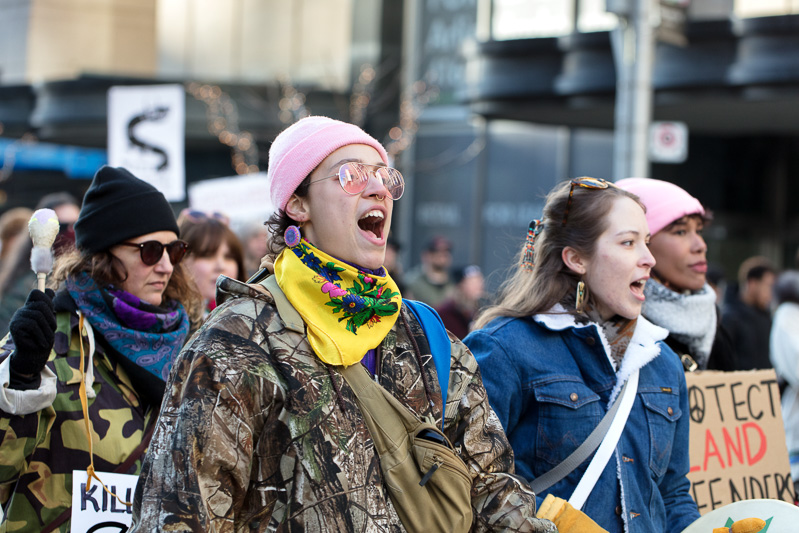
What does costly solidarity look like? In intellectual terms, I might frame it like this: a radical identification that forces you to permanently alter your position. I don’t know how that would play out as praxis. After all, I’m just in it for the chance of a decent photograph.
The crowd turns down Bay Street. My wife texts, wondering where I am. It’s time for dinner.
